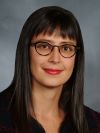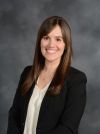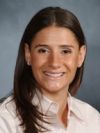Swallowing Disorders result from a variety of etiologies, including neurological conditions (degenerative diseases), neurological insults (strokes), head and neck cancer (presurgical, postsurgical and/or post-chemoradiation treatments), presbylaryngeal changes (age-related swallowing changes) as well as anatomical, sensory or functional larynx changes.
Swallowing difficulties may include, but are not limited to:
- Difficulty chewing foods.
- Difficulty keeping food or liquid in the mouth.
- Difficulty getting food or drink down to the stomach.
- Coughing and choking while eating or drinking.
- Pain swallowing .
- Aspiration of food or liquid.
- Sensation of a "lump" in the throat (globus).
Diagnosis
An examination must include a thorough case history and an assessment of swallowing structures and their functions. The case history involves specific questions about the problem and related issues including past swallowing problems, current medications and associated medical conditions. The lips, teeth, jaw, tongue, pharynx and other parts of the body involved in swallowing are examined to ensure sure that none are broken, out of place, removed (surgically) or not working correctly. Swallowing muscle movement and function is also examined to ensure strength and proper function. As part of examination, patients may be asked to taste different flavors, drink and eat small amounts of food and liquid and learn or practice potential swallowing maneuvers. If objective swallow testing is deemed necessary, and not completed by a referring physician, speech-language pathologists perform tests including:
- Video-fluoroscopic swallow studies (modified barium swallow study MBS) in an X-ray hospital suite. During this examination, patients are asked to eat and drink a variety of things while being X-rayed.
- Flexible Endoscopic Evaluation of Swallowing (FEES). A flexible endoscope (camera) is passed through a nasal passage to the back of the throat where the passage of food and drink can be observed.
These examinations are performed to identify the source of the swallowing disorder and how to best manage it (with texture modification, management strategies or a combination of both).
Treatment
Once a clinical or objective swallow test is completed, a treatment protocol is developed and tailored to specific patient needs. This may include teaching or modeling swallowing exercises and ensuring that recommended diet textures are adhered to and compensatory swallowing strategies are employed accurately. Treatment frequency varies by patient.
Swallowing Support
We offer a prophylactic head and neck swallowing exercise (pharyngocise) program in order to treat long-term swallowing disorders that arises from cancer treatment via radiation or chemoradiation. Support and objective swallow testing are offered before, during and after treatment.
Providers




